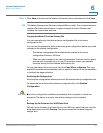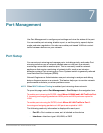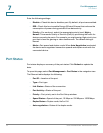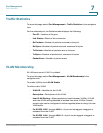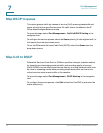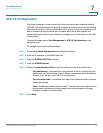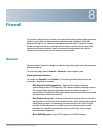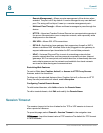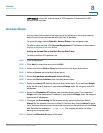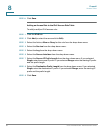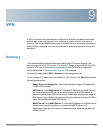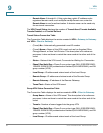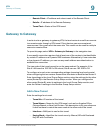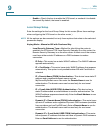
8
Cisco RV320/RV325 Administration Guide 77
Firewall
The primary objective of a firewall is to control the incoming and outgoing network
traffic by analyzing the data packets and determining whether it should be
allowed through or not, based on a predetermined rule set. A network firewall
builds a bridge between an internal network that is assumed to be secure and
trusted and another network, usually an external (inter)network such as the
Internet that is assumed not to be secure and untrusted.
General
General firewall controls manage the features typically used by Internet browsers
and applications.
To open this page, select Firewall > General in the navigation tree.
Enabling Firewall Features
To enable the Firewall, check Enable. The following firewall features can be
enabled or disabled as needed:
• SPI (Stateful Packet Inspection)—Monitors the state of network
connections (such as TCP streams, UDP communication) traveling across it.
The firewall distinguishes legitimate packets for different types of
connections. Only packets matching a known active connection are allowed
by the firewall; others are rejected.
• DoS (Denial-of-service )—Detects attempts to cause a server overload. In
general terms, DoS attacks are implemented by either forcing the targeted
computer(s) to reset, or consuming its resources so that it can no longer
provide its intended service or obstructing the communication media
between the intended users and the victim so that they can no longer
communicate adequately.
• Block WAN Request—Drops TCP requests and ICMP packets.



